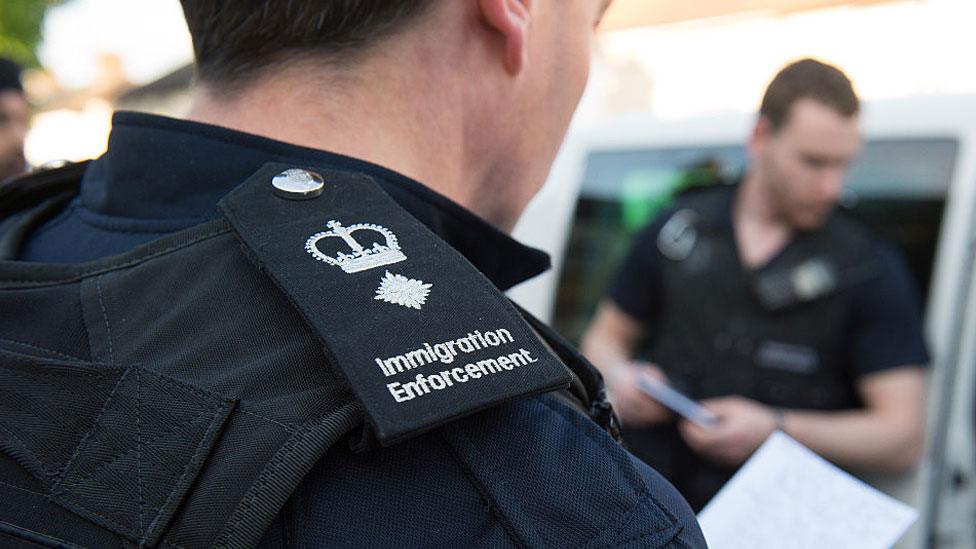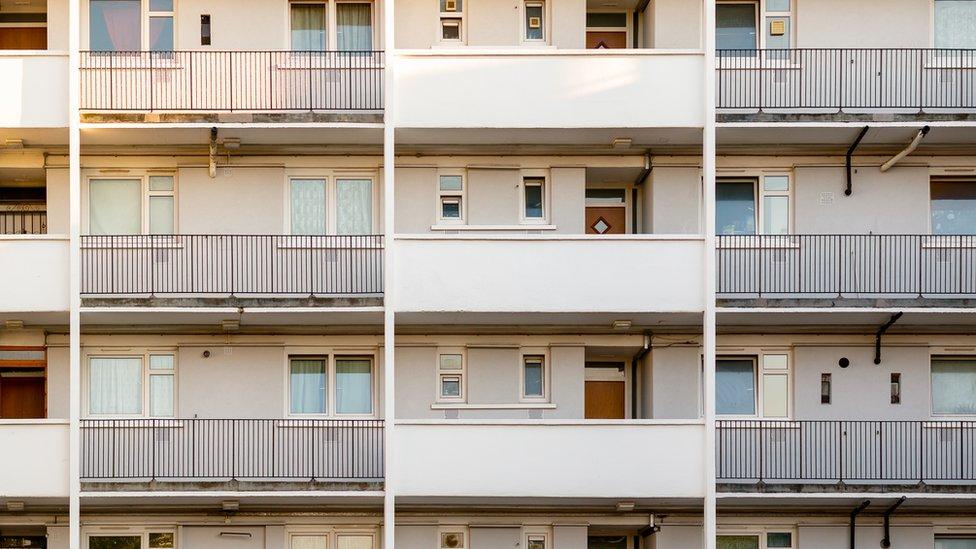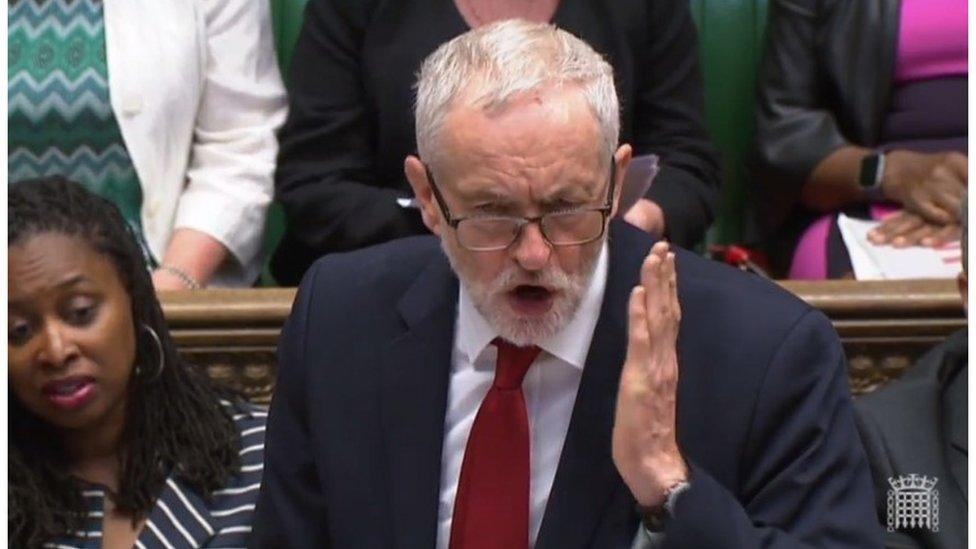Illegal immigration: Has the 'hostile environment' worked?
- Published

Deportation targets, landlord checks, bank account freezes - have the policies that caught out the legally-resident Windrush generation actually worked to tackle illegal immigration?
A row over whether removal targets were or weren't being used by the Home Office became the latest in a series of unknowns, from exactly how many people might have been affected to whether other communities could find themselves in the same position.
What targets?
Home Secretary Amber Rudd on Wednesday insisted immigration removal targets did not exist, before later confirming that they had been used for "internal performance management". A leaked memo has since suggested she was told of their existence.
Lucy Moreton, general secretary of the Immigration Services Union, told BBC Reality Check that every civil service department sets targets against which it measures its performance. Problems only arose because of a "pressure to detect and remove as many people as we possibly can", she said.
Laws introduced over the past five years were designed to create a "hostile environment" for illegal immigrants - but it has become clear over the past weeks that some people living here legally have fallen foul of these measures because they don't have the right paperwork.
Ms Rudd told Parliament on Thursday that: "Everyone in this House agrees that this group were here legally, but also that people who are here illegally should be treated differently from legal migrants."

The hostile environment
Private landlords are required to check the immigration status of their tenants, under a rule known as "right to rent"
The NHS also has to carry out checks as part of its legal duty to identify and charge patients who don't qualify for free medical care for their treatment
The Home Office has been given greater powers to investigate and prevent "sham marriages"
The driving licence authority has been given powers to restrict migrants' access to licences
Banks and building societies must conduct checks of the immigration status of their customers
Employers have to check their workers' immigration status and can face large fines or even prison

Despite these policies and removal targets, the number of removals and detentions has been falling.
Part of the intention of these policies was to make life difficult enough for people living in the UK illegally so that they would leave of their own accord.
But Ms Moreton says the falling number of detentions and removals is partly explained by cuts to the number of spaces in detention centres which mean people can't be detained, and then abscond before they can be deported.
Appearing before a select committee, Home Secretary Amber Rudd denies there are targets
She adds this drives more people into the "grey economy" - informal or illegal work that doesn't get captured in official statistics - meaning they vanish from the system and become more difficult to find. In these cases, the policy may be having the opposite of its intended effect.
Lack of evidence
David Bolt, the independent chief inspector of borders and immigration, said in a 2014 report that there was "insufficient hard evidence to say whether they were achieving what the government intended".
He added that the justification for extending these powers in 2016 was "based on a conviction that they are 'right' in principle" rather than on any evidence they were working.
In a report published last month, he said that the "right to rent" scheme requiring landlords to check their tenants' immigration status had "yet to demonstrate its worth" and was potentially discriminatory.
And, in a review of exit checks, he warned that major gaps in the data meant "presenting exit checks as the answer to managing the illegal migrant population" at the moment "remains wishful thinking".

Landlords are legally obliged to check the immigration status of their tenants
Exit checks
Exit checks were stopped in 1998 and reinstated in 2015.
Now most people are being counted in and out, but there are particular groups of people it's difficult to track, like those travelling by coach or ferry, or leaving via the Common Travel Area with Ireland.
The system works by matching millions of records of arrivals and departures at the border to create "identities" of people.
As of last March, there were 600,000 people who should have left the country for whom there was no record of their departure.
How many people are we talking about?
It is not possible to know exactly how many illegal immigrants are in the UK. By definition, those who are in the country illegally evade authorities in order to remain undetected. This means illegal immigrants don't generally show up in the statistics unless they are detected and removed.
But some attempts have been made to estimate the total size of this population putting the figure anywhere between 300,000, external and more than a million., external
Like all the studies to date, it only serves as an estimate of what is by nature a hidden population.
Figures on deportations and detentions alone don't provide us with evidence that the policy is achieving its aims - in fact, they are falling.
But those people who leave voluntarily, perhaps dissuaded by the toughening up of immigration rules, may never be captured in any figures.
They also don't capture the "pull factor" - people who may have come to the UK but have been deterred - making it difficult to assess how effective the hostile environment policies have been.



- Published26 April 2018

- Published25 April 2018
